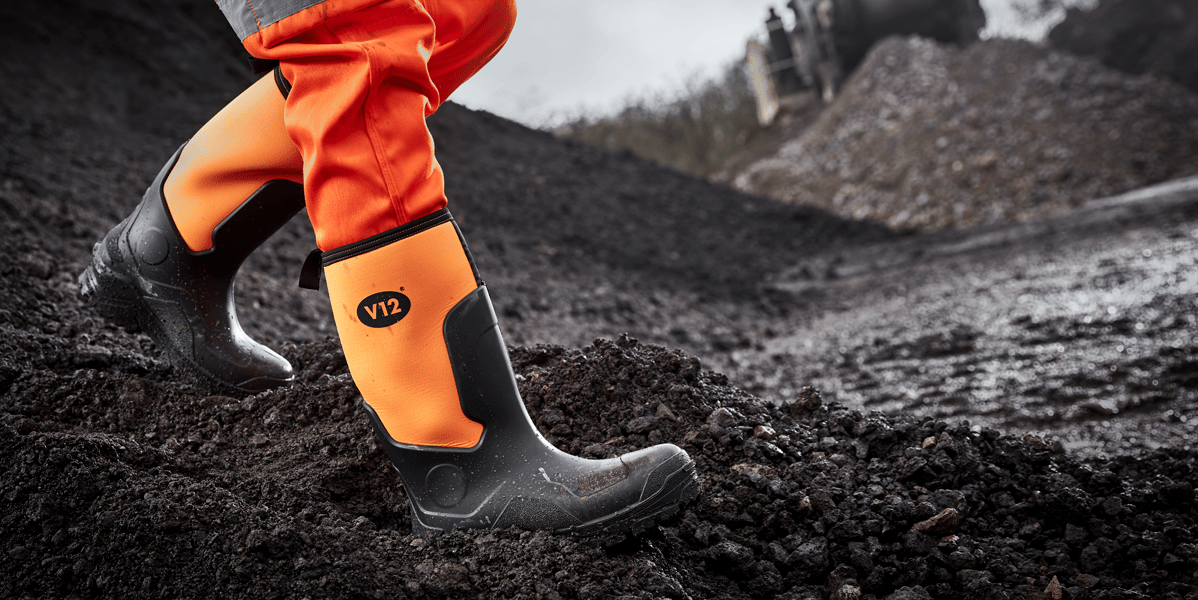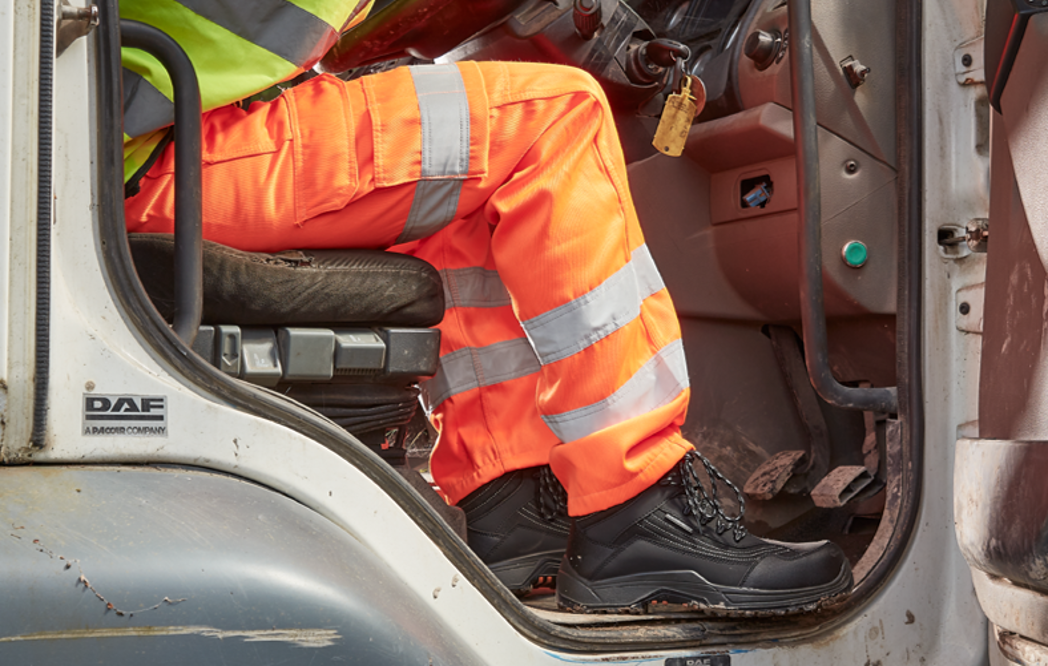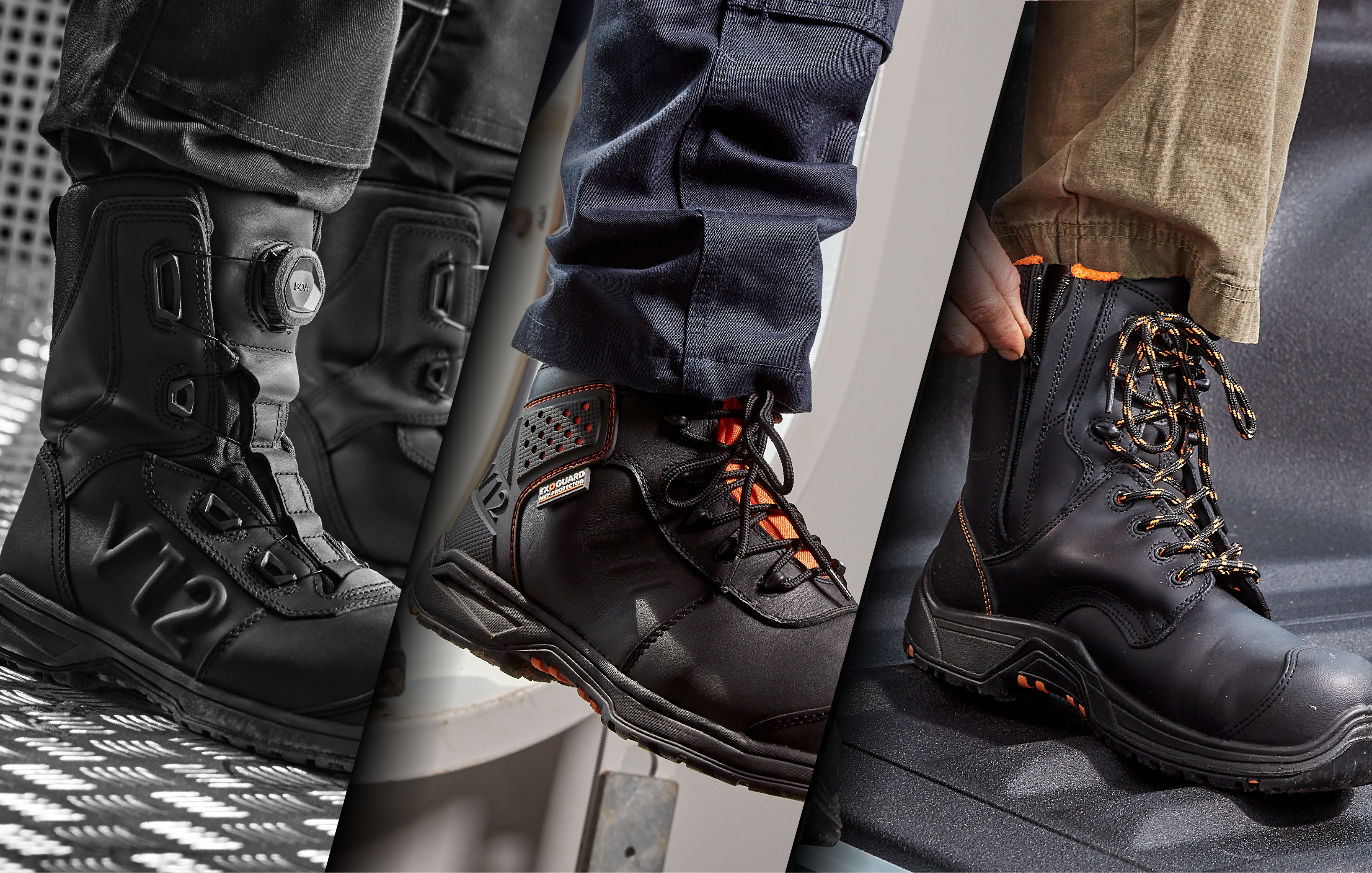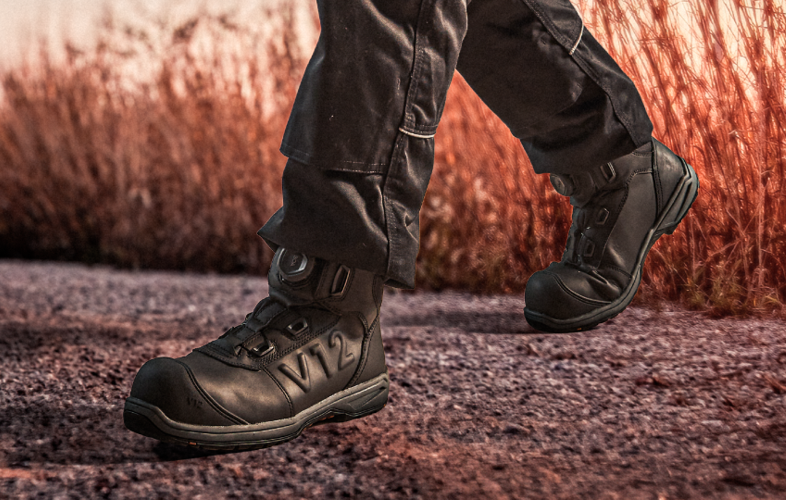Recently, the safety standards for footwear were updated to EN ISO 20345:2022, which has changed several safety codes, including information on waterproof footwear. The new safety standards have also introduced two new classifications, both of which feature updated information on types of waterproof safety footwear.
If you’re a sole trader looking for waterproof safety boots, or you’re in charge of procuring waterproof safety footwear for a team and you’re feeling in the dark about what the new standards mean for you, this blog will clear up the confusion.
And speaking of confusion, let’s clear up a very common question before we get started...
Waterproof or water-resistant – what's the difference?
This is a common area of confusion, but there is a big difference between the two.
Water-resistant footwear:
Protects the wearer from light or infrequent exposure to water such as occasional rain, but will let water in eventually. Water-resistant does NOT mean waterproof.
Waterproof footwear:
Will be made with a special plastic waterproof membrane sewn into the lining which water will not penetrate. So, in a waterproof boot, your feet will stay dry, as water cannot get past the membrane. (Read the full blog on this here)
IDENTIFYING A WATERPROOF BOOT
In the 2022 standards, there is more than one category where you can find a waterproof safety boot. It all depends on your role and in what way you are exposed to water.
WATERPROOF FOOTWEAR WITHIN THE 2022 SAFETY STANDARD CLASSIFICATIONS
Safety footwear standards categories go from SB right up to S7. The following ‘S’ safety categories relate to waterproof safety footwear.
S4 – This type of footwear is waterproof due to its rubber or polymer construction, as they’re are usually wellingtons. S4 boots don’t come with midsole protection.
Suitable for:
Those working around constant and high volumes of water who might need their footwear to go above the ankle and require their boots to be quickly washed by being hosed down. These boots will often be used by people working in the food industry or abattoirs.
S5 – These boots are just like S4 boots (safety wellingtons which are waterproof thanks to a rubber or polymer construction) but with one difference - S5 boots feature midsole protection.
Suitable for:
Those working around high volumes of water who might need their footwear to go above the ankle and work on surfaces that feature sharp objects such as groundworkers or those in construction roles involving digging.
V12’s latest safety wellington ‘Groundworker’ is an S5 boot, as it is waterproof and offers a super strong anti-penetration midsole. It’s also the lightest safety wellington it its class – check it out here.
S6 – these are waterproof boots that are often described as being ‘waterproof throughout the whole piece of footwear.’ This is simply a term to mean they have a waterproof membrane, so can be submerged in water and the feet inside would stay dry. S6 boots, like S4 boots, have no midsole protection.
Suitable for:

Those who work frequently around high levels of water but need a safety boot rather than a wellington and don’t walk on surfaces that feature sharp objects such as screws or nails.
S7 – You've guessed it, S7 boots are the same as S6 (waterproof throughout the whole boot) but come with midsole protection to keep the wearer’s underfoot safe.
Suitable for:
Those who work frequently around high levels of water but need a boot rather than a wellington and work on surfaces that feature sharps like screws or nails.
That’s S4-S7. Do you know the other safety classifications, what they mean and how they could affect you or your team? Learn all you need to know about the rest of the updated safety standards by downloading our guide here.
I’VE ALREADY GOT MY BOOTS - HOW CAN I TELL IF THEY ARE WATERPROOF WITHOUT GETTING THEM WET?
To check your boots’ waterproof properties, in the absence of an expert, you should always look at the tongue (or the inside of the upper if it's a wellington). It will have all the information about your boot’s safety specification, including details on its level of water-repellence. Look below:
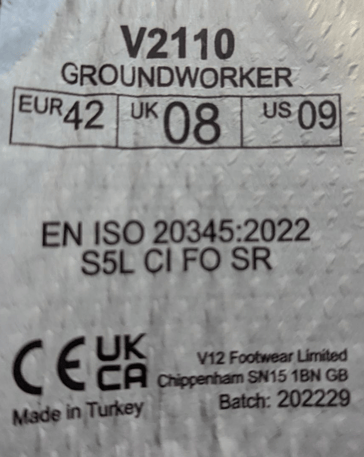
On the inside of this boot, you’ll see, amongst other details, a series of numbers and letters. The first piece of information is EN ISO 20345:2022. This means it’s been tested to the newest safety standards available. After this, you can see ‘S5L’ which, if we remember the information above, means it is waterproof as S5 footwear are rubber or polymer boots, and don’t let in any water due to their material.
IF THE ‘S’ CATEGORIES SHOW WATERPROOF PROPERTIES, WHAT IS THE WR CODE FOR?
The new classifications in the 2022 standards show what type of waterproof capabilities a boot has, but there is another way of denoting this. The ‘WR’ code will be applied to a safety boot if it's not in the S4,S5,S6 and S7 categories, but has waterproof protection as an additional feature. For example, you could have an S1 boot (with a toecap, a closed heel, anti-static, energy absorption) that can have waterproofing added to it. This would stay in the S1 classification, but on the tongue, its safety code would have an additional ‘WR’ to show it is waterproof.
MY BOOTS ARE TESTED TO THE 2011 STANDARDS – HOW DO I CHECK IF THEY’RE WATERPROOF?
In the older standards, things work slightly differently. Head to this blog and all will be explained.
Remember - if your boots have been tested to the old EN ISO 20345:2011 safety standards, they aren't out of date or invalid. Boots tested to these standards are still valid for 5 years after their certification date.
What do the L, CI, FO and the SC mean?
One step at a time! Once you’re confident with the waterproof information, head to the blog below to learn more about the additional safety markings in the new EN ISO 20345:2022 standards.

.png)
